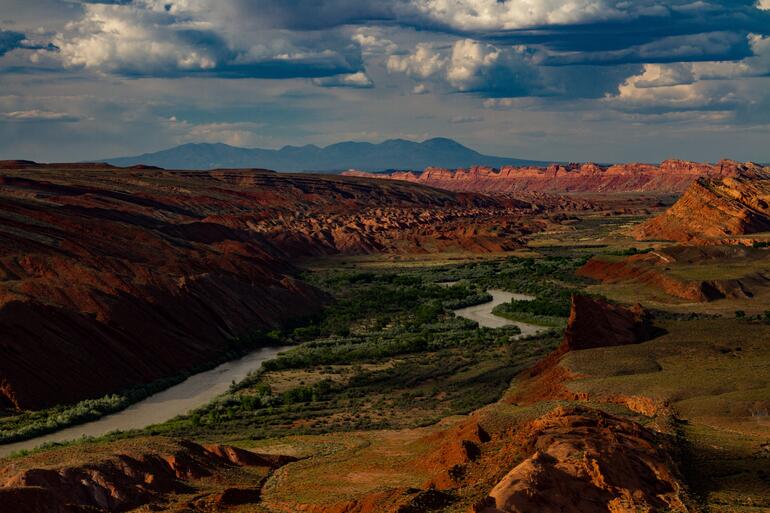
Site: Bears Ears National Monument
Location: Utah
The Bears Ears National Monument includes thousands of ancient sites sacred to the Indigenous tribes of North America, scattered through the deep, twisting canyons, in caves, and perched on narrow ledges high up on sheer rock faces. The ancestral land of Indigenous tribes has been largely owned and managed by federal and state government since the early twentieth century.
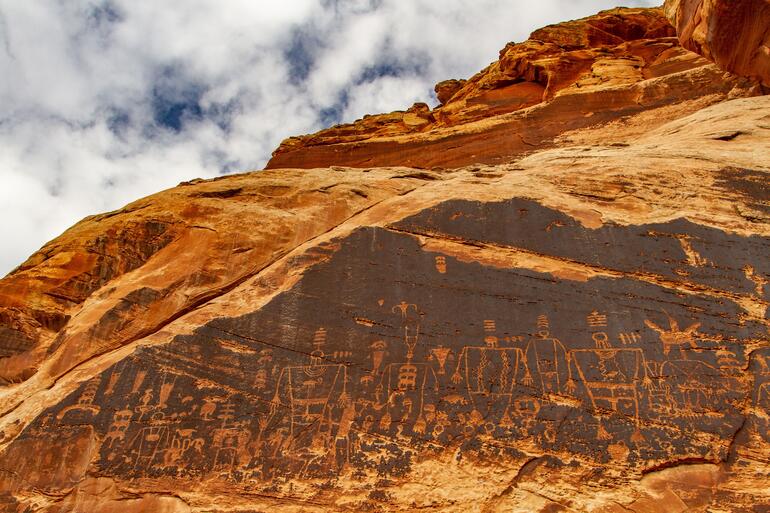
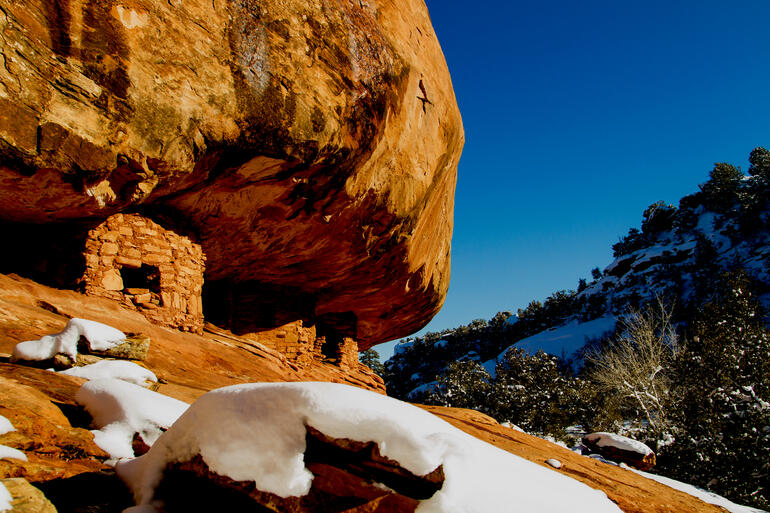
At the behest of the Bears Ears Inter-Tribal Coalition representing five Indigenous tribes, which had steadfastly advocated for protection of their ancestral lands, President Obama designated 1.35 million acres of southeast Utah as the Bears Ears National Monument in December 2016. The following administration dramatically reduced the protected area—from 1.35 million to just over 200,000 acres—exposing large swaths of ancestral territory to drilling and mining.
Bears Ears National Monument was included on the 2020 World Monuments Watch to support the efforts of a local group to protect Bears Ears, and call for the government to reconsider its plan.
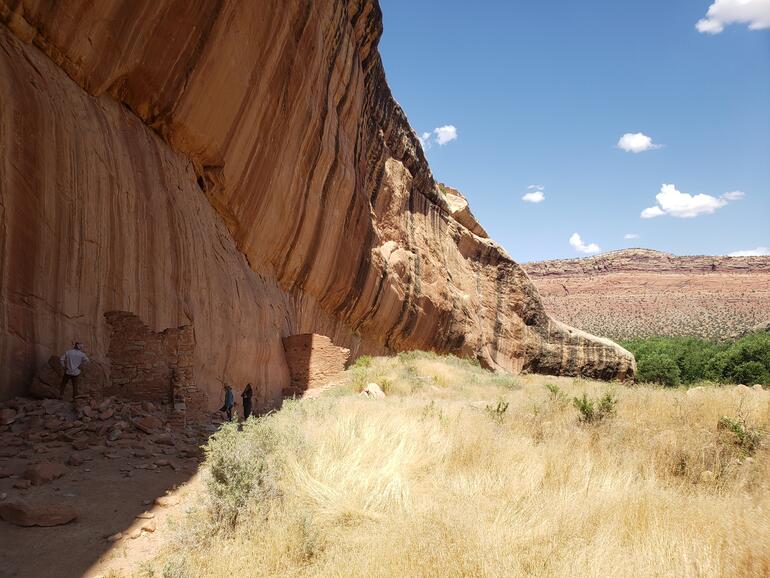
After including Bears Ears on the 2020 World Monuments Watch, WMF partnered with Friends of Cedar Mesa to protect the most at-risk sites that are of immense significance to the Hopi Tribe, Navajo Nation, Ute Mountain Ute Tribe, Pueblo of Zuni and Ute Indian Tribe, and other modern Indigenous peoples.
A year later, the Biden administration restored the boundaries of Bears Ears National Monument in an act of spatial and social justice. Continuing our work at the site, we encourage further efforts by the U.S. government to meaningfully engage Indigenous communities as decision makers, ensuring that their cultural ties to the land are honored and ancient structures are protected for future generations.
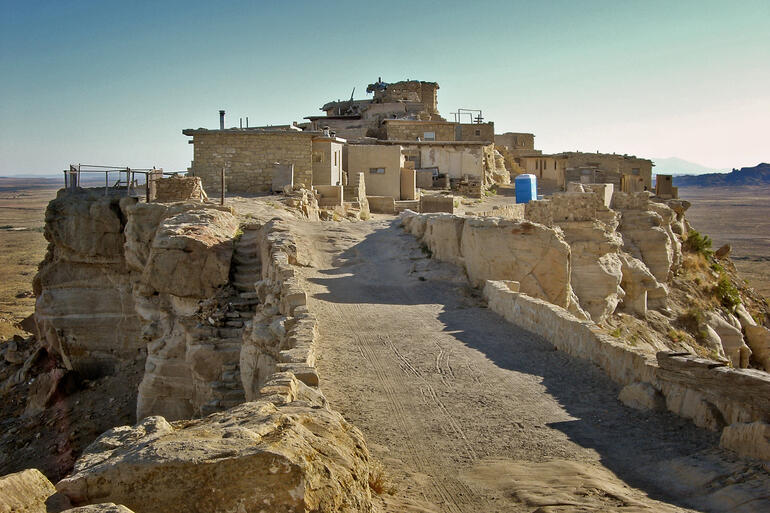
Site: Walpi Village
Location: First Mesa, Arizona
Walpi Village is a significant Native American site that represents traditional Hopi architecture and identity. Throughout the centuries, the historical integrity of the village has been retained by avoiding the introduction of running water and electricity, and the walls of its buildings are still hand-plastered by local women.
Over the years, the site's integrity has been compromised due to a number of factors. Following Walpi’s inclusion on the 2012 World Monuments Watch, WMF partnered with the village community to draw attention to the basic maintenance practices required to keep the site in good condition, and collaborated with the Walpi Village Administrator to develop a pilot project in traditional roof installation to continue the protection of the historic fabric of the village, ensuring the continuing traditional Hopi way of life.
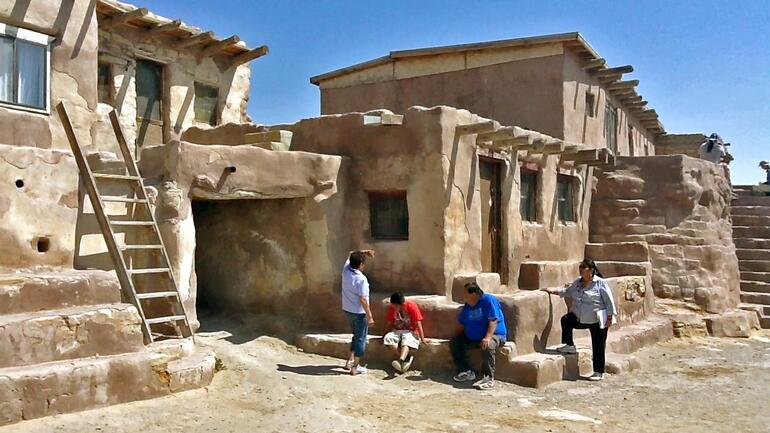
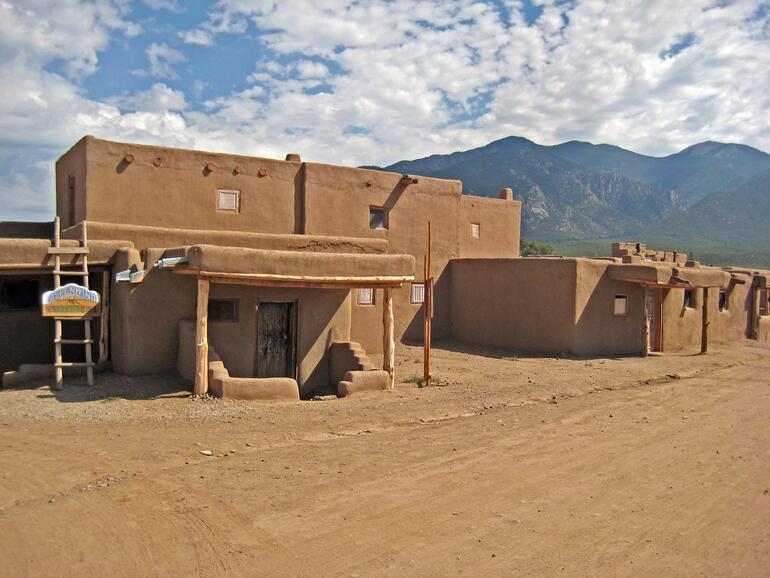
Site: Taos Pueblo
Location: Taos Pueblo, New Mexico
Situated in a sunbaked valley in north central New Mexico and continuously inhabited for 1,000 years, the community and architecture of Taos Pueblo exemplify the enduring genius of the Pueblo people. The traditional adobe materials used are from sacred tribal lands and applied using traditional techniques,and in recent years modern interventions have been made though the historic structures of the pueblo remain without electricity and modern plumbing, in accordance with tribal customs.
Designated a UNESCO World Heritage Site in 1992, Taos Pueblo was included on the 2010 World Monuments Watch and a collaboration began between WMF and the Taos Tribal Council to document the pueblo and develop a model restoration project. Ten young tribal members trained in traditional building techniques to reconstruct an 11-unit sub-house at the entrance of Taos Puebloa, and following completion of the project, Taos Pueblo received an $800,00 grant from the U.S. Department of Housing and Urban Development so additional workers could be hired and trained in traditional construction techniques for conservation work. Workshops were also held for pueblo homeowners that focus on the maintenance of traditional adobe homes.
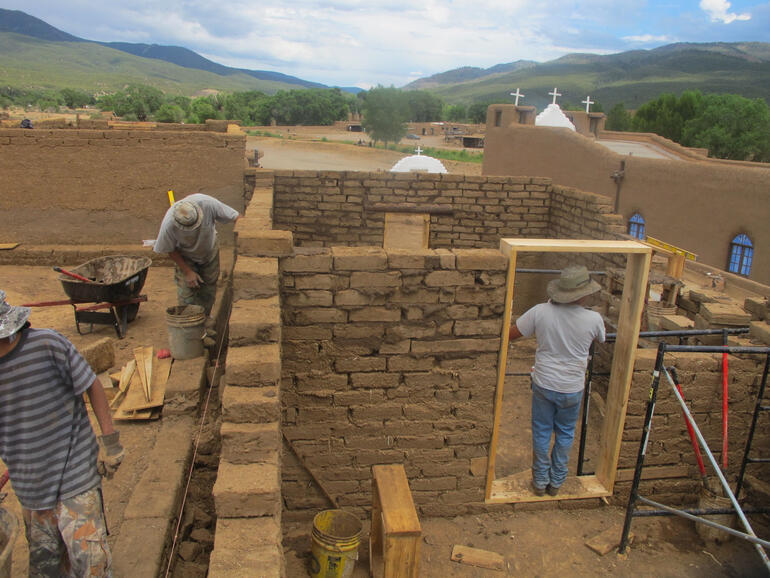
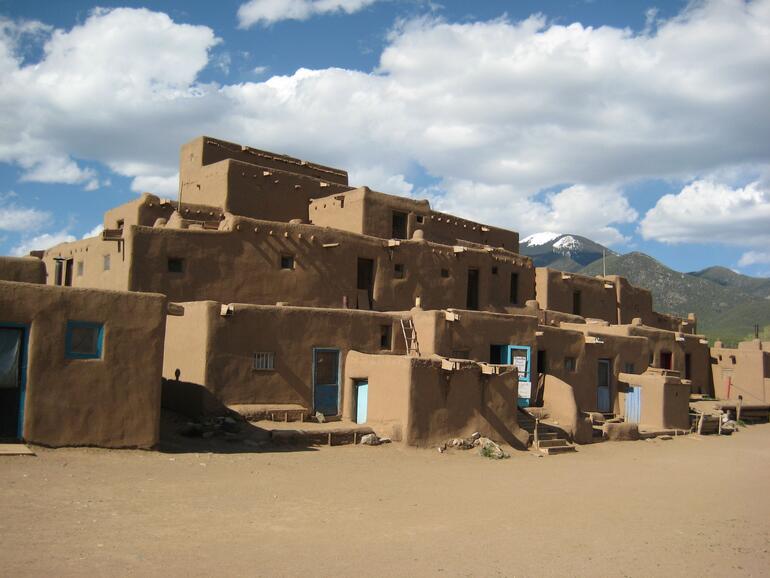
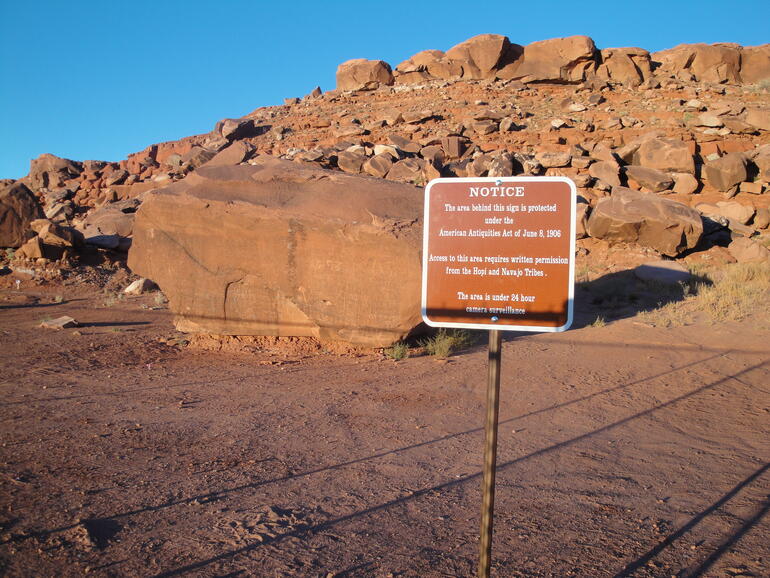
Site: Tutuveni Petroglyphs
Location: Hopi Tribal Land
The Tutuveni Petroglyph site boasts more than 5,000 Hopi clan symbols that were inscribed during the ceremonial pilgrimage to Ongtupqa, or the Grand Canyon, which is for many Hopi the point of their people’s emergence into the world. It is a ritual for Hopi youths to visit the site and the petroglyphs as part of their education about their ancestors, and they also play an important role in the modern scholarship of Hopi language, iconography, and history.
Following years of vandalism, WMF collaborated with the Hopi Land Information Systems, Petrified Forest National Park, CyArk, and Redlands University in 2010 to document the petroglyphs utilizing laser-scanning, hands-on training in digital documentation, and the installment of a protective fence and security surveillance cameras. The project digitally preserved the current state of the petroglyphs and brought awareness of the site, encouraging continuing respect for this sacred place.
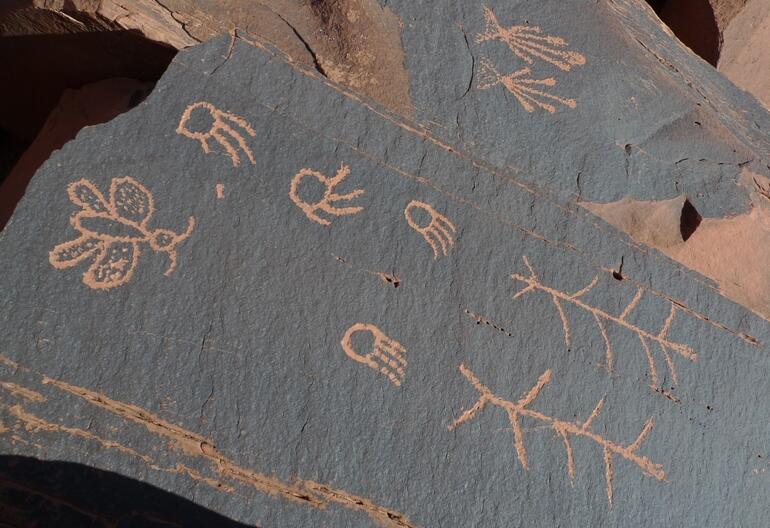
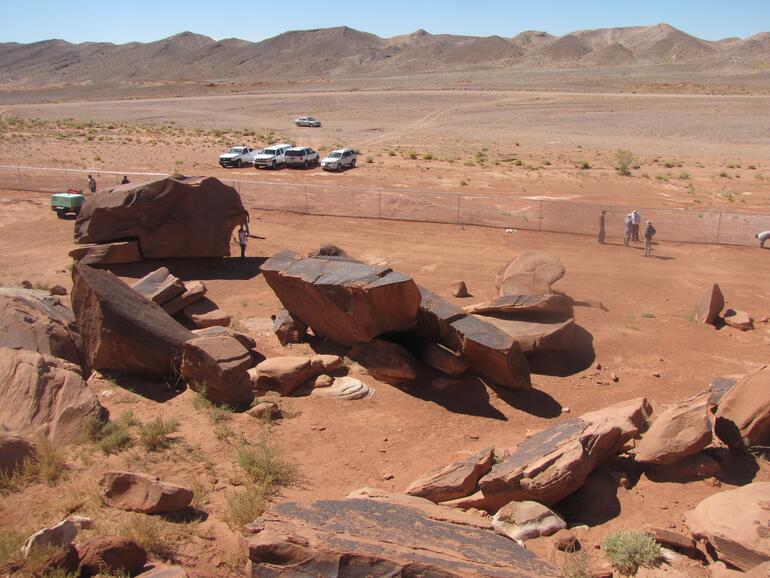
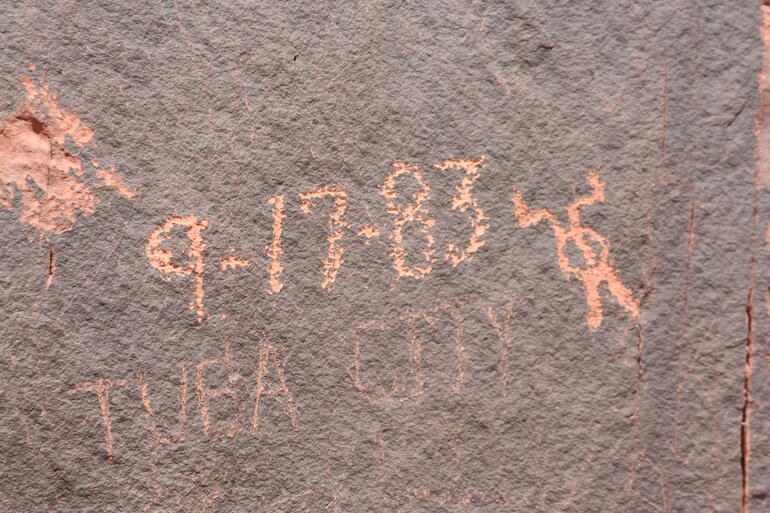
We thank our project team members and partners that helped make this work possible and continue to do so. More than ever, it is imperative that the voice of the Tribes and Pueblos is not only heard but taken seriously.
